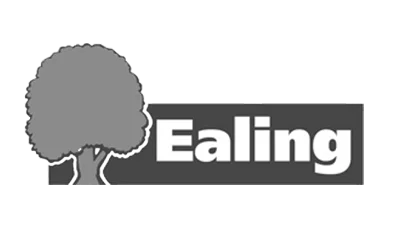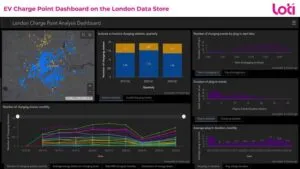Introduction
London boroughs are increasingly using smart infrastructure to deliver better outcomes for their residents. A specific example of this is Electric Vehicle (EV) charge points. Driven by our desire to help boroughs make the most of smart city technologies and to collaborate with data, LOTI has been working to develop a single view of London’s EV charge point network and its usage.
Exploring the potential of smart city technology is one thing, but making a case for future investment, particularly for scaling up, is something that warrants careful consideration. Without the evidence base for existing smart city applications such as usage of electric vehicle charge points, how can borough officers make informed decisions about their future deployment?
Therefore, in this project, we sought to explore how we could support borough highway and transport officers to make the right decisions about what types of charge points to deploy in which areas.
We brought together colleagues from Greenwich and other boroughs as well as the GLA, London Councils, and private sector charge operators to develop a dashboard that shows the location of charge points at ward level and their usage.
Thanks to Paul Hodgson and Yiran Wei from the GLA’s Intelligence Unit, we developed a dashboard that currently includes data for approximately 3,500 points (161 of which are rapid charging). All were procured via the TfL Electric Vehicle Charging Infrastructure Framework and the Go Ultra Low Cities Scheme (GULCS).
Currently, the dashboard displays information for a period of up to 12 months and data is provided quarterly. This is not ideal for spotting trends over a longer timeframe. As well as seeking to increase the data frequency, we are working with boroughs to add additional datasets that can provide richer insights about the needs of charge points users (e.g. to predict future demand). We’ll be making these changes to reflect borough needs in the next prototype.
In terms of data sharing, we’re pleased to have made one giant leap in the right direction. Thanks to Claudia Corrigan, from London Councils, we agreed for all GULCS programme operators to provide data to a common standard format and via the London Datastore. This is an approach LOTI has been advocating for from our inception. You can find out more about our data-sharing approach here.
There are many more improvements that need to be made, and we’re taking these forward as we take this prototype to the next level.














